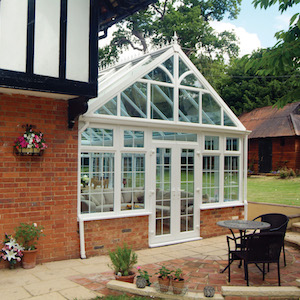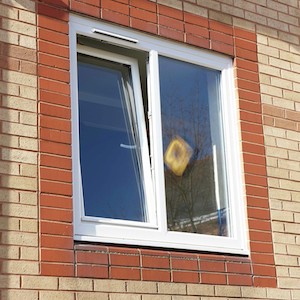Ginger Banuelos
Blog entry by Ginger Banuelos
Understanding UPVC Windows and Doors: The Ultimate Guide
Over the last few years, the popularity of UPVC (unplasticized polyvinyl chloride) windows and doors has surged, and for great factor. These items provide a perfect blend of efficiency, design, and toughness, making them an ideal option for property owners and contractors alike. This short article digs into the numerous elements of UPVC windows and doors, exploring their advantages, costs, maintenance, and frequently asked questions.
What is UPVC?
UPVC is a type of plastic that is extensively utilized in the building industry, especially for Window upvc door and door frames. Unlike regular PVC, UPVC does not contain plasticizers, which makes it stiff and appropriate for structural applications. The product is resistant to wetness and ecological destruction, giving it a longer life-span compared to traditional products like wood and metal.

Advantages of UPVC Windows and Doors
Sturdiness: UPVC is highly resistant to rot, corrosion, and fading, making it an outstanding option for environments with severe climate condition.
Energy Efficiency: UPVC frames can assist enhance the energy efficiency of homes. They are exceptional insulators, which implies they can help in reducing heating and cooling expenses.
Low Maintenance: Unlike wood frames that may require routine painting and sealing, UPVC can merely be cleaned up with soap and water, keeping its appearance with very little effort.
Economical: Although the preliminary financial investment might be greater than aluminum or wooden options, the long life expectancy and low upkeep requirements of UPVC make it a more cost-effective choice gradually.
Aesthetically Pleasing: UPVC windows and doors can be found in various styles and colors, making sure house owners can discover an option that complements their home.
Table 1: Comparison of UPVC with Other Materials
| Feature | UPVC | Wood | Aluminum |
|---|---|---|---|
| Toughness | Highly long lasting | Prone to rot & & decay | Rust resistant |
| Energy Efficiency | Exceptional insulation | Moderate insulation | Good insulation |
| Maintenance | Low maintenance | High maintenance | Moderate upkeep |
| Cost (Initial) | Moderate to high | High | Moderate |
| Appearance Options | Wide range available | Natural surfaces | Modern completes |
Types of UPVC Windows and Doors
UPVC products can be found in various designs to match different architectural styles and individual choices. Some typical types consist of:
Windows:
- Casement Windows: Hinged at the side, these windows open outward, providing exceptional ventilation.
- Sliding Windows: These windows run on a track, permitting simple opening and closing.
- Sash Windows: Featuring sliding panes, sash windows provide a conventional look and functionality.
- Tilt and Turn Windows: Versatile in design, these windows can tilt for ventilation or turn fully for simple cleaning.
Doors:
- UPVC Front Doors: Designed to supply security and insulation, these doors are readily available in different designs.
- French Doors: These double doors open external and develop a seamless link to outdoor areas.
- Sliding Patio Doors: Ideal for maximizing views and natural light, these doors run efficiently along a track.
- Bi-fold Doors: These doors can fold back to develop an open area, ideal for amusing or connecting indoor and outdoor areas.
Advantages of UPVC Doors and Windows
Increased Security: UPVC doors and windows are often fitted with multi-point locking systems, making them a safe and secure option for homes.
Noise Reduction: The insulation homes of UPVC assistance in lowering noise contamination, creating a quieter indoor environment.
Environmentally Friendly: UPVC is recyclable, making it a sustainable choice for ecologically mindful customers.
Adjustable: With alternatives for various colors, finishes, and hardware, UPVC items can be customized to match any home decoration.
Setup Process
The installation of UPVC windows and doors is vital for ensuring their performance and durability. Here are the key actions associated with the setup procedure:
Measurement: Accurate measurements of the existing openings are taken.
Preparation: The old frames are eliminated, and the area is cleaned up and prepped for the new setup.
Placement: The new UPVC frames are placed, ensuring they fit comfortably within the openings.
Sealing: The frames are sealed utilizing suitable sealing materials to avoid drafts and water ingress.
Ending up: Final adjustments are made to make sure the windows and doors operate efficiently, and any finishing touches are added.
Maintenance Tips for UPVC Windows and Doors
To keep UPVC windows and doors in good condition, the following upkeep ideas are suggested:
Regular Cleaning: Use a wet fabric or sponge with mild soap to clean down the frames and glass surfaces. Prevent harsh chemicals that can damage the material.
Inspect Seals and Locks: Regularly inspect the sealing and locking mechanisms to ensure they are functioning correctly.
Oil Moving Parts: Use a silicone-based lube on hinges and locks to keep them operating smoothly.
Look for Damage: Periodically inspect for any noticeable damage or use to address issues before they intensify.
FAQs About UPVC Windows and Doors
The length of time do UPVC doors and windows last?
- UPVC windows and doors can last upwards of 20 years with appropriate upkeep.
Are UPVC items energy efficient?
- Yes, UPVC uses outstanding insulation properties, which can significantly improve energy effectiveness in homes.
Can UPVC windows be painted?
- While UPVC can be painted, it's typically not advised, as this might void guarantees and affect the product's integrity.
Are UPVC items recyclable?

- Yes, UPVC is recyclable, making it an environmentally friendly choice.
Can I install UPVC doors and windows myself?
- While DIY installation is possible, it is recommended to hire professionals for proper and safe setup.
In summary, UPVC doors and windows offer a myriad of benefits that make them a clever investment for property owners. Their sturdiness, energy efficiency, low maintenance requirements, and large range of designs position them as an attractive option in the market. Comprehending the qualities and benefits of UPVC can assist consumers make informed decisions when upgrading or building their homes. As sustainability continues to end up being progressively important, materials like UPVC will remain at the forefront of modern building and construction.